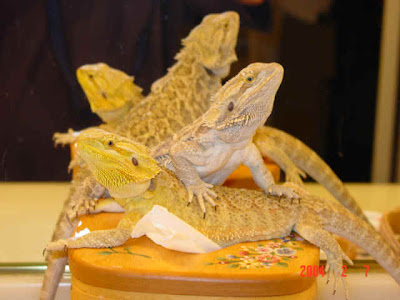The Ultimate Guide to Hypo Pastel Bearded Dragon: A Beginner's Handbook
Meet the Beautiful Hypo Pastel Bearded Dragon
Looking for a unique and stunning pet that will stand out among all the others? Look no further than the hypo pastel bearded dragon! This special variety of bearded dragon is known for its gorgeous coloring and friendly demeanor. And if you’re a beginner looking for a low-maintenance pet that’s easy to care for, the hypo pastel bearded dragon is an excellent choice.
What is a Hypo Pastel Bearded Dragon?
Bearded dragons are a popular pet reptile, and the hypo pastel variety is a relatively new addition to the breed. This type of bearded dragon has been selectively bred to have a bright, pastel coloration that is truly eye-catching. Hypo pastel bearded dragons can vary in color from light yellows and oranges to shades of cream and pink, depending on the breeding involved.

Caring for Your Hypo Pastel Bearded Dragon
Habitat and Environment
To keep your hypo pastel bearded dragon happy and healthy, it’s important to provide a suitable habitat and environment. Bearded dragons need plenty of space to move around and explore, so you’ll need a large enclosure - at least 40 gallons for a young dragon, and up to 120 gallons for adults. Make sure the enclosure is secure and well-ventilated, and contains plenty of hiding places, basking spots, and shelves for climbing.

Temperature and Lighting
One of the most important aspects of caring for a bearded dragon is providing consistent temperatures and lighting. Bearded dragons need a basking spot with a temperature between 95-105 degrees Fahrenheit, and a cooler side of the enclosure of around 80 degrees. Use a thermometer to monitor the temperatures, and adjust your heat source as needed. You’ll also need to provide UVB lighting, which helps your bearded dragon metabolize calcium and prevent health issues like metabolic bone disease. A UVB bulb should be on for 12-14 hours per day.
Diet and Feeding
Bearded dragons are omnivores, which means they eat both insects and vegetables. Crickets, mealworms, and superworms are popular insect choices, while collard greens, dandelion greens, and squash are good vegetable options. You’ll also need to dust your bearded dragon’s food with calcium powder to make sure they’re getting the nutrients they need. Feeding should happen once a day for juvenile bearded dragons, and every other day for adults.

Conclusion
If you’re thinking about getting a bearded dragon as a pet, the hypo pastel variety is an excellent choice. These dragons are beautiful, friendly, and relatively easy to care for - making them perfect for beginners. Remember to provide a suitable habitat with consistent temperature and lighting, and feed your dragon a balanced diet. With a little bit of care and attention, your hypo pastel bearded dragon will thrive and bring joy to your life for years to come.
